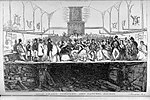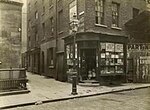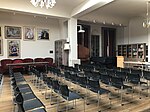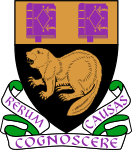The World Turned Upside Down (sculpture)
2019 in London21st-century sculpturesCross-Strait relationsLondon School of EconomicsOutdoor sculptures in London ... and 1 more
Vandalized works of art in the United Kingdom

The World Turned Upside Down is a sculpture by the Turner Prize-winning artist Mark Wallinger, on Sheffield Street, London, within the campus of the London School of Economics. The name World Turned Upside Down comes from a 17th-century English ballad. The sculpture, measuring 13 feet (4 m) in diameter, features a globe resting on its North Pole and was unveiled in March 2019. It reportedly cost over £200,000, which was funded by alumni donations.
Excerpt from the Wikipedia article The World Turned Upside Down (sculpture) (License: CC BY-SA 3.0, Authors, Images).The World Turned Upside Down (sculpture)
Houghton Street, London Holborn
Geographical coordinates (GPS) Address Nearby Places Show on map
Geographical coordinates (GPS)
| Latitude | Longitude |
|---|---|
| N 51.5144 ° | E -0.1174 ° |
Address
London School of Economics and Political Science (London School of Economics)
Houghton Street
WC2A 2AE London, Holborn
England, United Kingdom
Open on Google Maps








